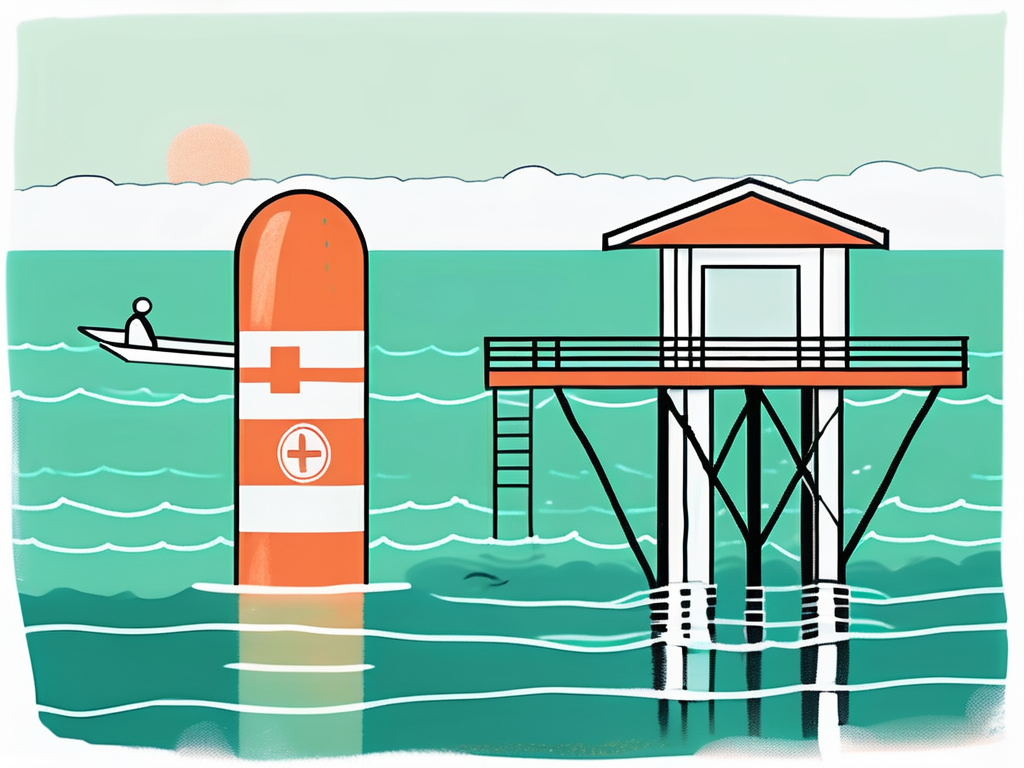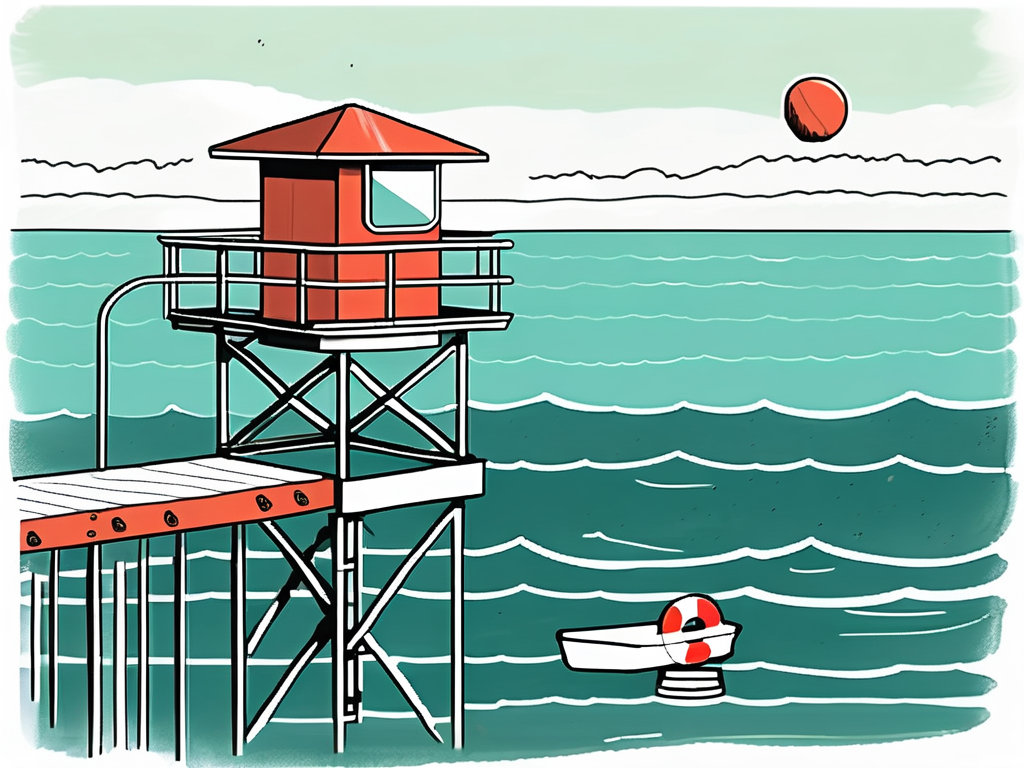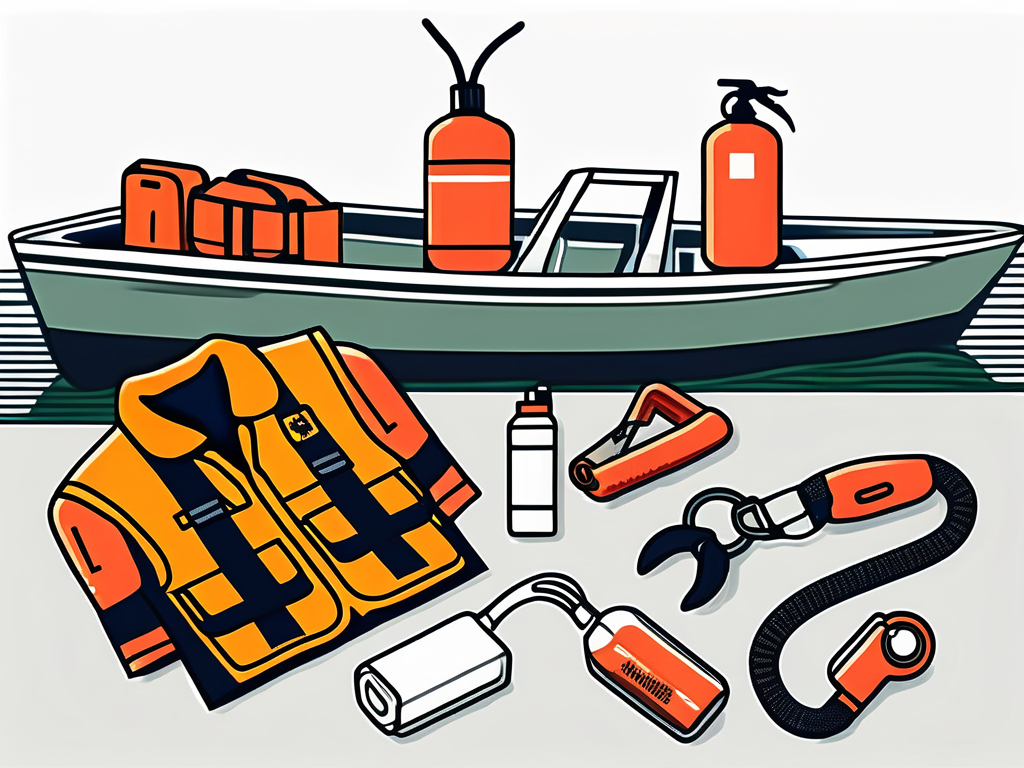Essential Water Safety Guidelines for Open Water Swimming
Open water swimming is a thrilling and invigorating activity that allows swimmers to explore natural bodies of water such as lakes, rivers, and oceans. However, it comes with its own set of risks and challenges. To ensure your safety and make the most of your open water swimming experience, it is important to follow some essential water safety guidelines. In this article, we will explore these guidelines and provide valuable insights into staying safe while enjoying the beauty of open water.
Understanding Water Safety Guidelines
Before diving into the open water, it is crucial to understand the basic water safety guidelines. These guidelines serve as a foundation for ensuring your safety and the safety of others around you.
One important aspect of water safety is decoding common water safety signs. These signs are often found at beaches and swimming spots and provide important information about potential hazards and swimming conditions. Pay close attention to these signs and always follow their instructions to avoid any unnecessary risks.
Additionally, it is important to emphasize the importance of following lifeguard instructions. Lifeguards are trained professionals responsible for ensuring the safety of swimmers. Take their instructions seriously, as they are there to protect you and others from potential dangers. Always adhere to their guidance and never underestimate the power of their expertise in maintaining a safe swimming environment.
Furthermore, it is essential to be aware of the weather conditions before heading out for a swim. Sudden changes in weather can lead to dangerous situations in the water. Keep an eye on weather forecasts and be prepared to postpone your swimming plans if adverse conditions are predicted. Remember, your safety should always be a top priority.
Another crucial aspect of water safety is understanding your own swimming abilities. It is important to be honest with yourself about your skills and limitations in the water. Avoid venturing into deep or rough waters if you are not a strong swimmer. Stay within designated swimming areas and never swim alone. By acknowledging and respecting your swimming capabilities, you can significantly reduce the risks associated with water activities.
The Benefits of Swimming in Groups
Swimming alone in open water can be enticing, but there are numerous benefits to swimming in groups. Not only does it provide a sense of community, but it also enhances safety. When swimming with others, there is a collective responsibility for each other's well-being. This means that if an emergency were to occur, there would be immediate assistance and support available. Find a local swimming group or club that promotes open water swimming and join to experience the joys of swimming in a supportive community.
Swimming in groups also increases overall safety. In case of an emergency, the group can quickly respond and seek help, minimizing potential risks. Moreover, swimming in a group also reduces the likelihood of encountering dangerous situations such as getting caught in strong currents or experiencing fatigue. Remember, there is strength in numbers, especially when it comes to open water swimming.
Another advantage of swimming in groups is the opportunity for skill enhancement. By swimming alongside others, you can observe different techniques and styles, which can help improve your own swimming abilities. Group swimming sessions often include drills and structured workouts that can challenge you to push your limits and become a stronger swimmer. Additionally, swimming with a group can provide motivation and encouragement, helping you stay committed to your swimming routine.
Staying Safe Around Fast-Flowing Water
Fast-flowing water, such as rivers and rapids, requires additional caution and expertise. It is essential to familiarize yourself with safety tips specifically designed for these environments.
When navigating rivers and rapids, it is important to stay alert and aware of your surroundings. Look out for potential hazards, such as submerged rocks or fallen branches. Ensure that you have the necessary skills and knowledge to maneuver through fast-flowing water safely.
Additionally, always wear appropriate safety gear when swimming in fast-flowing water. This includes a properly-fitted wetsuit or other protective clothing, as well as a helmet if necessary. These precautions can provide an added layer of protection and minimize the risks associated with swift currents.
Moreover, understanding the dynamics of fast-flowing water is crucial for staying safe. Rapid currents can exert powerful forces on the body, making it essential to know how to position yourself in the water to avoid being swept away. Learning how to read the flow of the river and identify eddies where the water slows down can help you navigate more effectively and stay in control.
Furthermore, it is advisable to never underestimate the speed and force of fast-flowing water. Even seemingly calm stretches of river can hide strong undercurrents that pose a significant risk to swimmers. Always err on the side of caution and avoid taking unnecessary risks when dealing with fast-flowing water, as the consequences can be severe. By respecting the power of nature and following safety guidelines, you can enjoy water activities in rivers and rapids while minimizing the potential dangers.
Avoiding Dangerous Water Behavior
Engaging in dangerous water behaviors can have severe consequences. One such behavior is 'tombstoning,' which involves jumping or diving into open water from a great height. This reckless activity can lead to serious injuries or even fatalities. It is crucial to understand the risks involved and always refrain from attempting such dangerous stunts.
To prevent 'tombstoning' and other dangerous behaviors, it is important to educate yourself and others on water safety. Spread awareness about the risks associated with reckless activities and emphasize the importance of making responsible choices. By avoiding dangerous water behaviors, you can greatly reduce the chances of accidents and injuries.
The Buddy System: Why Swimming with a Friend Matters
When it comes to open water swimming, the buddy system is an invaluable safety measure. Swimming with a friend not only adds to the enjoyment of the activity but also significantly enhances safety.

Having a swimming buddy means there is someone who can provide immediate assistance or raise an alarm in case of an emergency. This can be crucial, especially when swimming in remote or secluded areas where prompt help may not be readily available.
Swimming with a buddy also acts as an extra set of eyes and ears, increasing overall vigilance. Your swimming partner can alert you to any potential dangers or changes in the environment that you may have overlooked. In return, you can also keep a lookout for their safety, creating a mutual support system.
Be Prepared for Cold Water Conditions
Cold water swimming poses unique challenges and risks that swimmers must be prepared for. Understanding the risks associated with cold water is essential to stay safe during your swim.

Cold water can quickly lead to hypothermia, which can be life-threatening. Prioritize proper insulation by wearing a wetsuit or thermal swimwear to maintain your body temperature. Additionally, acclimate yourself gradually to colder water temperatures and never push yourself beyond your limits.
It is also important to be aware of the signs and symptoms of hypothermia, such as shivering, confusion, and fatigue. If you or someone you are swimming with exhibits these symptoms, exit the water immediately and seek warm shelter.
Essential Safety Gear for Boating and Fishing
Open water swimming is not limited to just swimming in the traditional sense. Boating and fishing are also popular activities that often accompany open water adventures. When engaging in these activities, it is essential to prioritize safety by wearing the appropriate gear, such as a buoyancy aid.

A buoyancy aid is designed to keep you afloat and provide additional support in case of an emergency. It is a crucial piece of equipment that should be worn by everyone, regardless of their swimming abilities. Remember, accidents can happen unexpectedly, so being prepared with the right safety gear can make all the difference.
Knowing How to Assist Others in Water Emergencies
Water emergencies can happen to anyone, including yourself or others around you. Having a basic understanding of water rescue techniques can be life-saving in such situations.
Even if you are not a trained professional, learning basic water rescue techniques can equip you with the necessary skills to assist someone in need. Knowledge of techniques such as reaching and throwing assists, assists with flotation devices, or simple tow assists can make a significant difference in a water emergency scenario.
Consider taking a water rescue or CPR training course to enhance your ability to respond effectively in emergencies. Being equipped with the knowledge and skills necessary to assist others can potentially save lives.
Conclusion
Open water swimming is an exhilarating experience that allows you to connect with nature and enjoy the beauty of natural bodies of water. However, it is crucial to prioritize safety and follow essential water safety guidelines.
By understanding water safety signs, following lifeguard instructions, swimming in groups, avoiding dangerous water behaviors, swimming with a buddy, being prepared for cold water conditions, wearing essential safety gear, and knowing how to assist others in water emergencies, you can ensure a safe and enjoyable open water swimming experience.
Remember, the open water is full of adventure, but it requires caution and respect. By following these guidelines, you can dive into open water swimming with confidence, knowing that you are equipped to handle any situation that may arise. Stay safe, swim responsibly, and make lasting memories in the open water!





